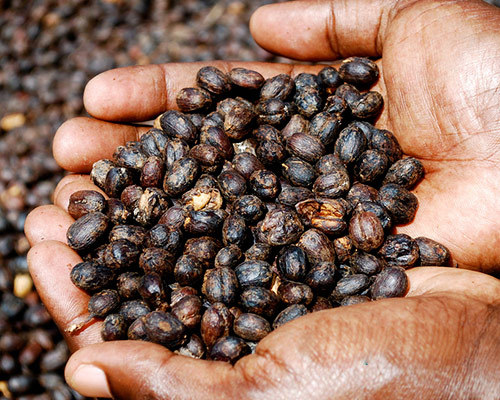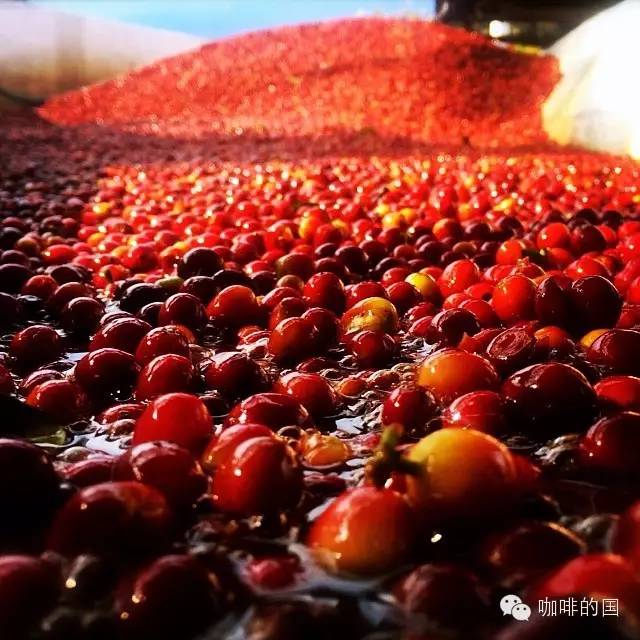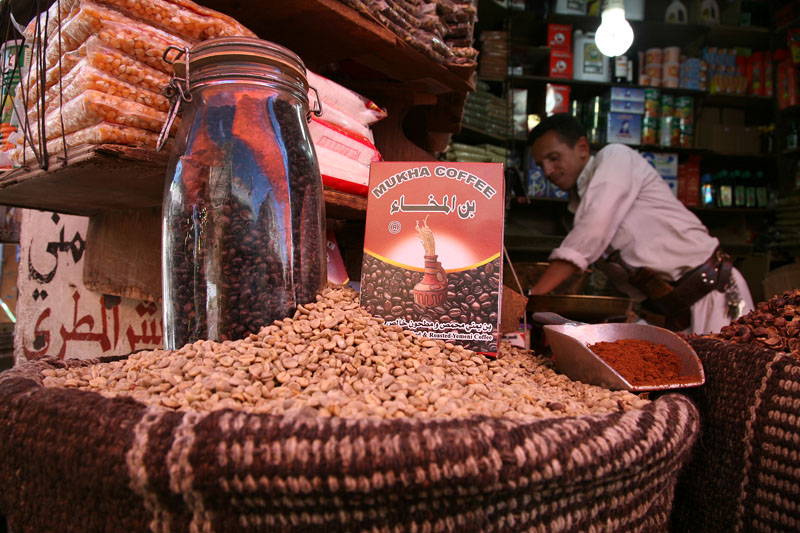Please introduce the raw bean treatment method of coffee washing, semi-washing, sun drying and honey treatment in Costa Rica.
The first type: dry treatment (secado), also known as natural full sun method (natural). Coffee fruit after picking, directly in the sun drying, depending on the weather conditions, generally to dry 1- 2 weeks, so that the water content of coffee beans reduced to 10%-12%, and then remove the dry peel pulp with a machine. Beneficio plants generally retain the parchment (pergamino) on the outside of the beans when they are stored and remove it before export (Costa Rican law states that green coffee beans cannot be exported with a parchment). This treatment generally requires sufficient sunlight in the area of origin.
The second type: wet treatment (lavado), also known as washing fermentation method. After the coffee fruit is transported to the coffee processing plant, the coffee peel is removed together with the pulp by a despulpadora (the coffee peel is thin and less flesh, so the peel and pulp are removed together with the peeling machine). At this time, the coffee beans are still wrapped in a parchment shell, and the parchment shell is adhered to a sticky sweet pectin. Coffee beans with pectin are placed in a cement fermentation tank, and the fermentation time is judged according to the specific conditions (whether water is added to the tank, whether the water is clean, etc.)(there is controversy about this point, with a minimum of 8- 12 hours and a maximum of 36-48 hours). After fermentation, the pectin no longer sticks tightly to the parchment shell, and then the pectin is washed away with running water. Finally, the shelled green beans are dried by solarization or machine (secadora,guardiola) to reduce the moisture content of the green beans to 10%-12%, and then stored in shell. This treatment does not have high requirements for sunlight.
The third type: semi-lavado, also known as honey,miel, is actually a combination of sunlight and washing fermentation to treat raw beans. First remove the peel and pulp of the coffee, then decide whether to remove pectin with a desmucilaginador or how much pectin is removed as needed, and finally reduce the moisture content of the green beans to 10%-12% by drying them in the shell or by sun or machine drying or a combination of both.
4. honey treatment
Today, honey treatment is used in almost all of Costa Rica's producing areas. This method is also widely used throughout Central America. Because the surface of coffee beans is extremely sticky and sugary, it is usually called "honey". During the honey treatment process, coffee leaves some or all of its "honey" when it dries. The coffee fruit is picked, graded and peeled before being dried on a drying bed.
Due to the short drying time of the mucosa, coffee beans are hardly fermented during drying. Coffee beans processed with this method are slightly more acidic than those processed with natural washing, but much less acidic than those processed with water washing and natural sun.
III. Level of honey treatment
Since the subject of this article is honey treatment, here are a few different honey treatments and their impact on the final taste of coffee.
Some plantations that had not previously used honey treatment had to treat coffee using the tools available. Since green bean processing plants in most regions, such as Latin America, Kenya and Ethiopia, used to transport green coffee beans with water, coffee beans lose some of their mucous membrane during transportation. In Costa Rica, Brazil or Colombia, local processing plants used to use high-pressure water washers, so some of the mucosa was removed during the peeling process. According to the amount of mucous membrane residue (40%-100%), honey treatment is divided into four grades: 40%, 60%, 80% and 100%. Of course, some growers intentionally remove portions of the mucous membrane to ensure that coffee does not ferment during drying and turn into fruit acids.
IV. Color classification of honey treatment
Today, some Costa Rican growers grade honeyed green coffee beans according to the color of the coffee. There are three levels: yellow, red and black. The change in color results from the length of time the coffee is exposed to light during drying.
Yellow honey treatment of green coffee beans the longest light duration. Longer light means hotter, so the coffee dries within a week. In general, coffee drying time depends on local climate, temperature and humidity conditions. The drying time of red honey-treated green coffee beans is 2-3 weeks, usually due to weather or placed in a dark place. If the weather is fine, growers block some sunlight to reduce the amount of light. Black honey-treated green coffee beans dry longest in the dark, and the shorter the illumination time. The drying time of this coffee is at least 2 weeks. Black honey green coffee beans processing process is the most complex, the highest labor costs, and therefore the most expensive.
Country: Ethiopia Fiscal year: 2003
Grade: G2
Production area: Yejia Xuefei
Degree of baking: Light baking
Treatment method: washing
Breed: Native species
Flavor: Jasmine, lemon, bergamot, honey, black tea
Kocher is located 25 kilometers southeast of Ethiopia, a small production area, is a rich coffee production area, but also one of the three famous micro-production areas of Yejia Shefi, local residents about 100,000 people, coffee beans as the main source of income, this production area processing equipment is very advanced. Coffee Review rated Kocher's beans 94 points.
There are eight major coffee producing regions in Ethiopia: Nekempte(Lekempti)Gimbi Kimbi, Limu Limu, Illubabor Ibedo, Djimma, Harrar Harrar, Teppi/Bebeka, Sidamo Sidamo, Yirgacheffe is located in Sidama administrative region of Ethiopia in Africa, and Yirgacheffe belongs to a smaller area within Sidama.
Country: Costa Rica Fiscal year: 2003
Grade: SHB
Region: Central Valley
Altitude: 1300-1500m
Annual rainfall: 3000 mm
Harvest month: December to February
Processing method: red honey processing
Breeds: Kadura, Kaduai
Producer: Fire Phoenix Manor
Raw beans specification: 18 mesh
Flavor: Dried fruit, vanilla, honey, thick and delicate taste
Located in the fertile volcanic hills of the Poas Valley in Central Costa Rica, the first producer of honey-treated and sun-cured coffee in Central and South America, the 100% organic coffee plantation believes that organic farming is the best choice for environmental protection and family health, despite many technical and organizational challenges. The high quality coffee produced by this estate is very unique, and the biggest feature is that it has a very amazing sweetness! He made a name for himself when he entered the boutique coffee contest in 2009. During the harvest season, the Brixmeter, which is often used in the wine industry, measures the sugar content of the fruit and determines the best time and treatment for harvesting according to the brix sugar content. Only those exceeding 20% sweetness will be exposed to sunlight. The Brix value of ordinary fruits is 14 for apples, 12 for lemons and 18 for passion fruits, but the coffee cherries of Phoenix Manor can reach 21~22. The estate pays great attention to the concept of environmentally friendly treatment, such as rainwater harvesting for coffee treatment; the production and use of organic compost using earthworm farming (worm compost) makes the planting process completely free of chemical fertilizers and pesticides.

Important Notice :
前街咖啡 FrontStreet Coffee has moved to new addredd:
FrontStreet Coffee Address: 315,Donghua East Road,GuangZhou
Tel:020 38364473
- Prev

What is the honey treatment method of coffee beans Honey treatment of coffee beans Three kinds of honey treatment What is called honey treatment
4. Today, honey is used in almost all of Costa Rica's producing areas. This method is also widely used throughout Central America. Because the surface of coffee beans is extremely sticky and high in sugar, it is usually called honey. During the honey treatment process, coffee leaves some or all of the honey when it dries. Coffee fruits are picked, graded, and peeled to be
- Next

Coffee black honey treatment method is to leave how many percent of the mucous membrane? what is honey processing coffee beans?
4. Honey treatment Today, honey treatment is used in almost all the producing areas of Costa Rica. This method is also widely spread throughout Central America. Because the surface mucosa of coffee beans is extremely sticky and smooth and the sugar content is extremely high, it is often called honey. In the process of honey treatment, coffee will leave some or all of the honey when it is dried. After picking, grading and peeling the coffee fruit, it will be
Related
- What is the meaning of lactic acid fermentation with coffee bean treatment?
- How to judge the state of foam by sound?
- How does the latte pull out the unicorn pattern? Come to get for a little trick to improve the flower pull!
- Will flower pulling affect the taste of the latte?
- Do you know the history of coffee?
- The difference between honey treatment and sun washing what is raisin honey treatment?
- What kind of milk can a novice use to make coffee foam to keep the foam longer? The correct method and skills of milking tutorial sharing
- Why do washed coffee beans taste sour? Flavor characteristics of washed Coffee
- Introduction to the skill of how to practice the size and height of water injection around the circle of hand-brewed coffee
- How do beginners practice coffee flower drawing from scratch?

